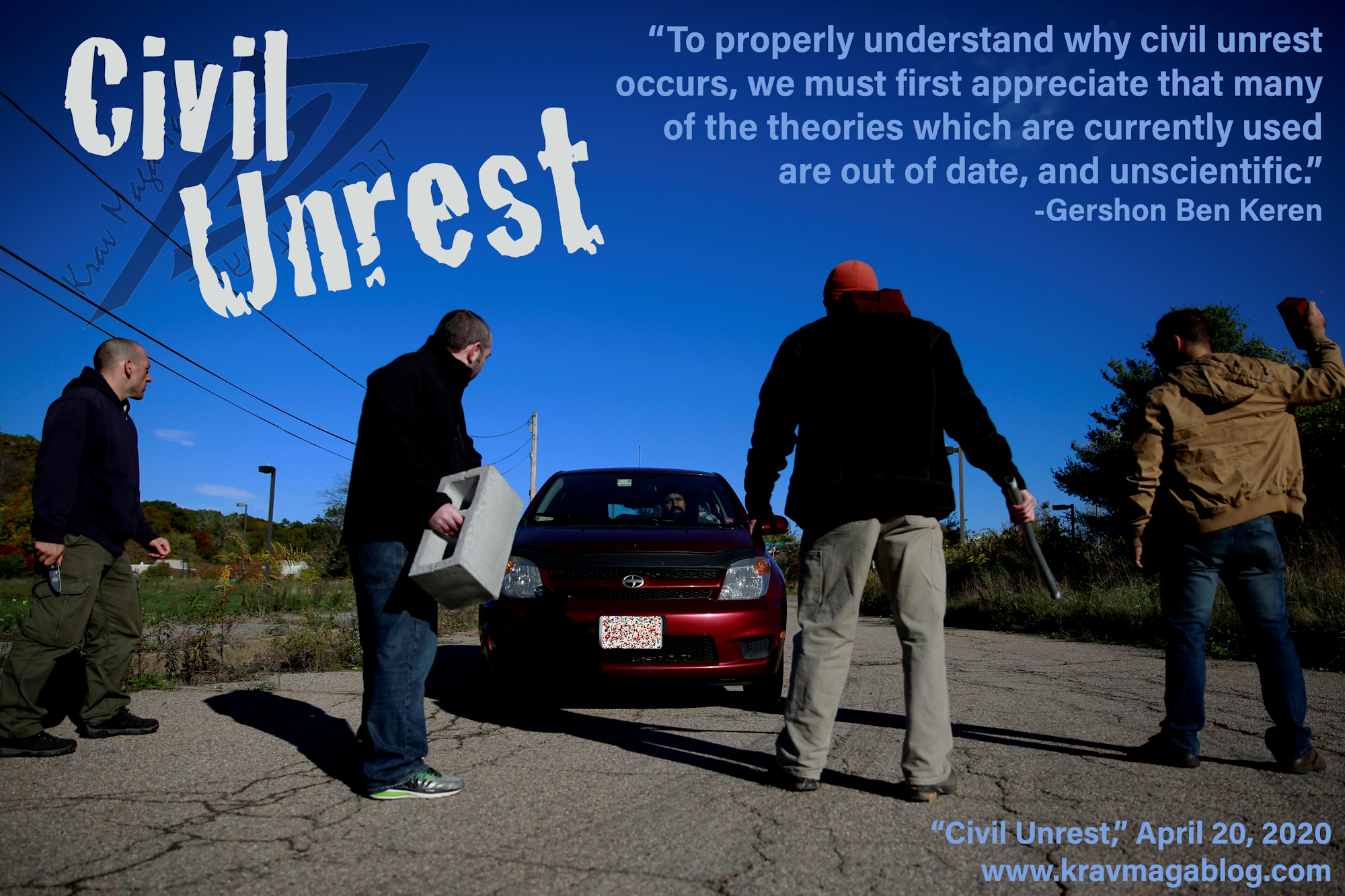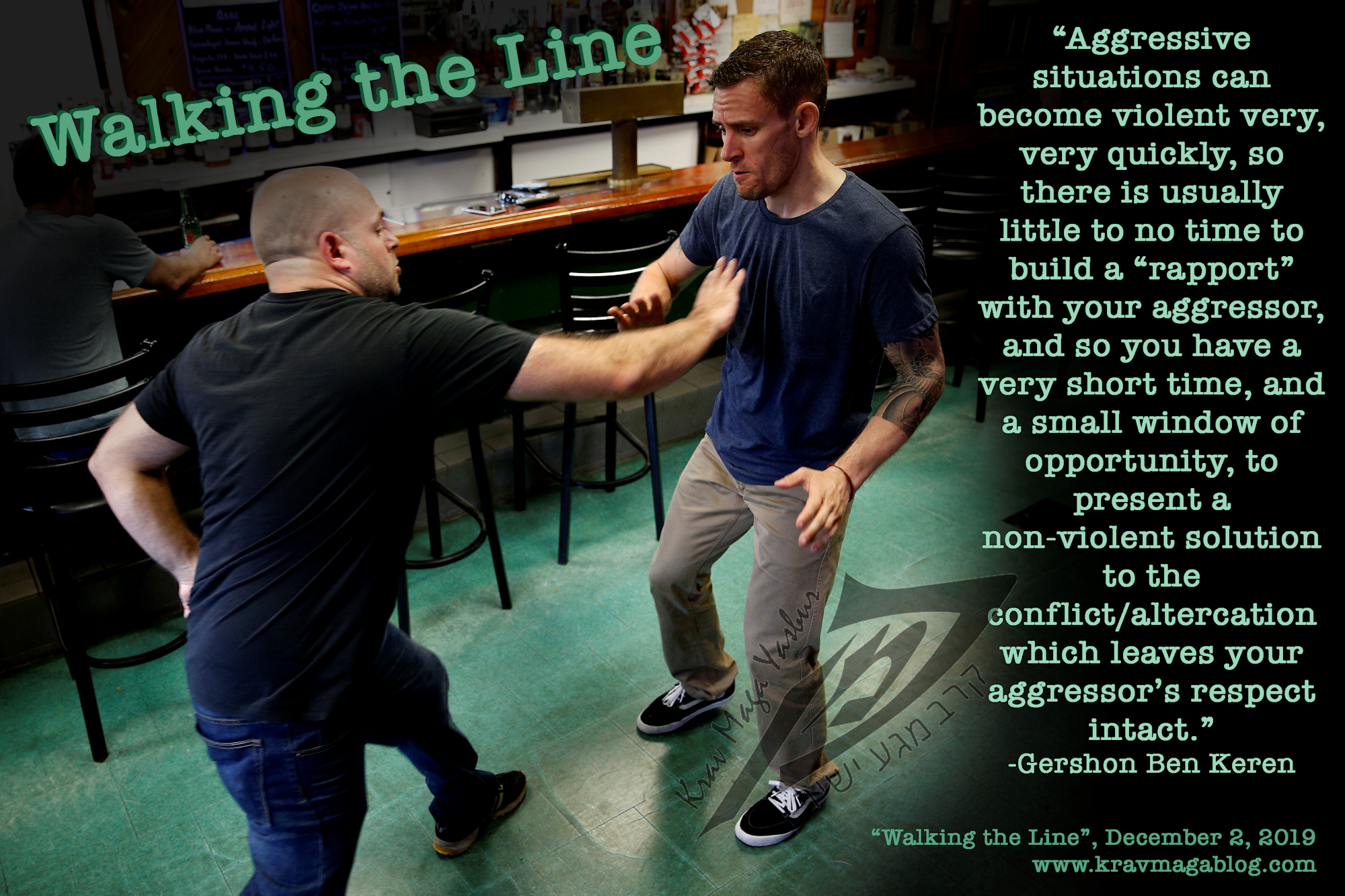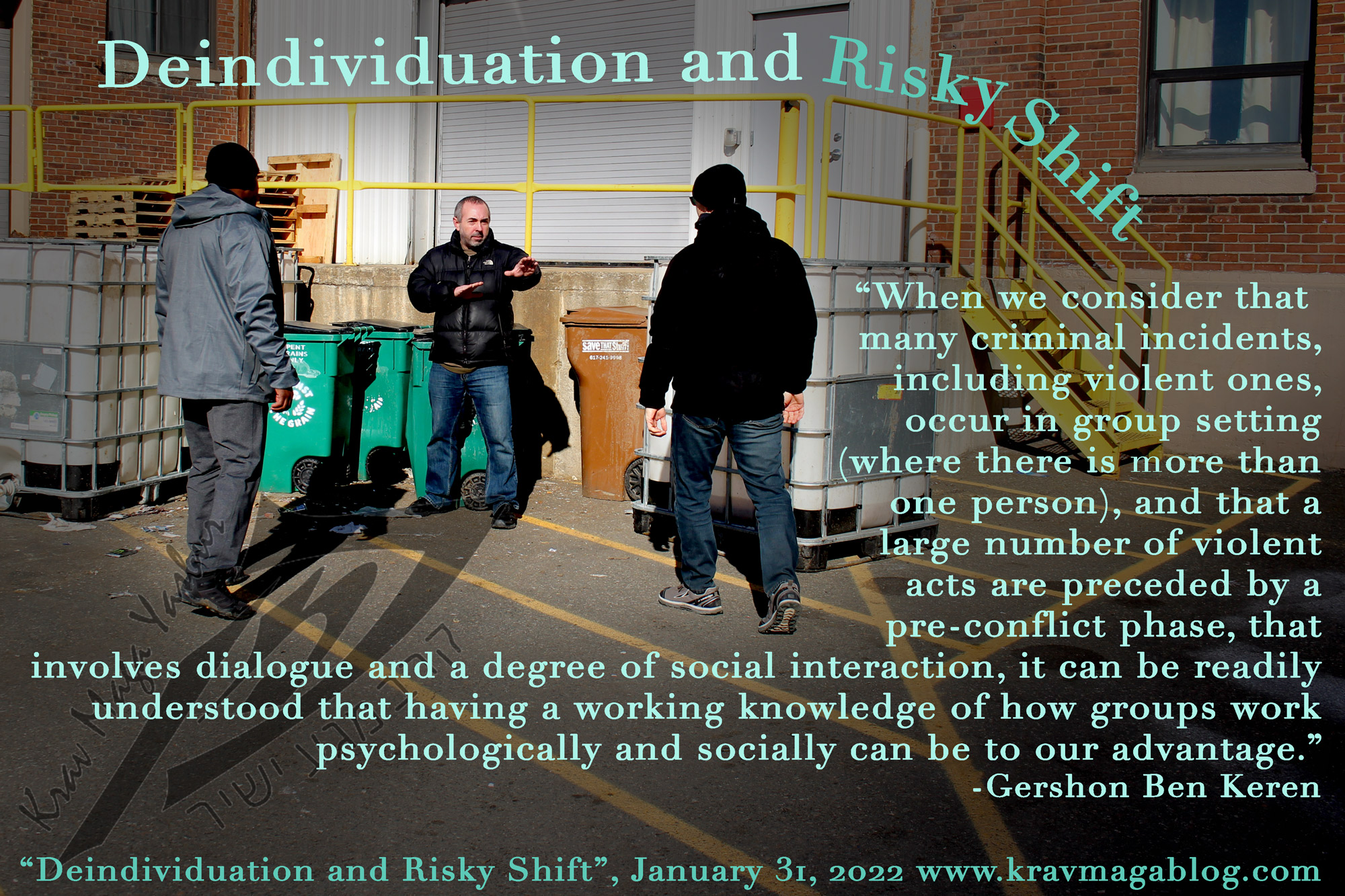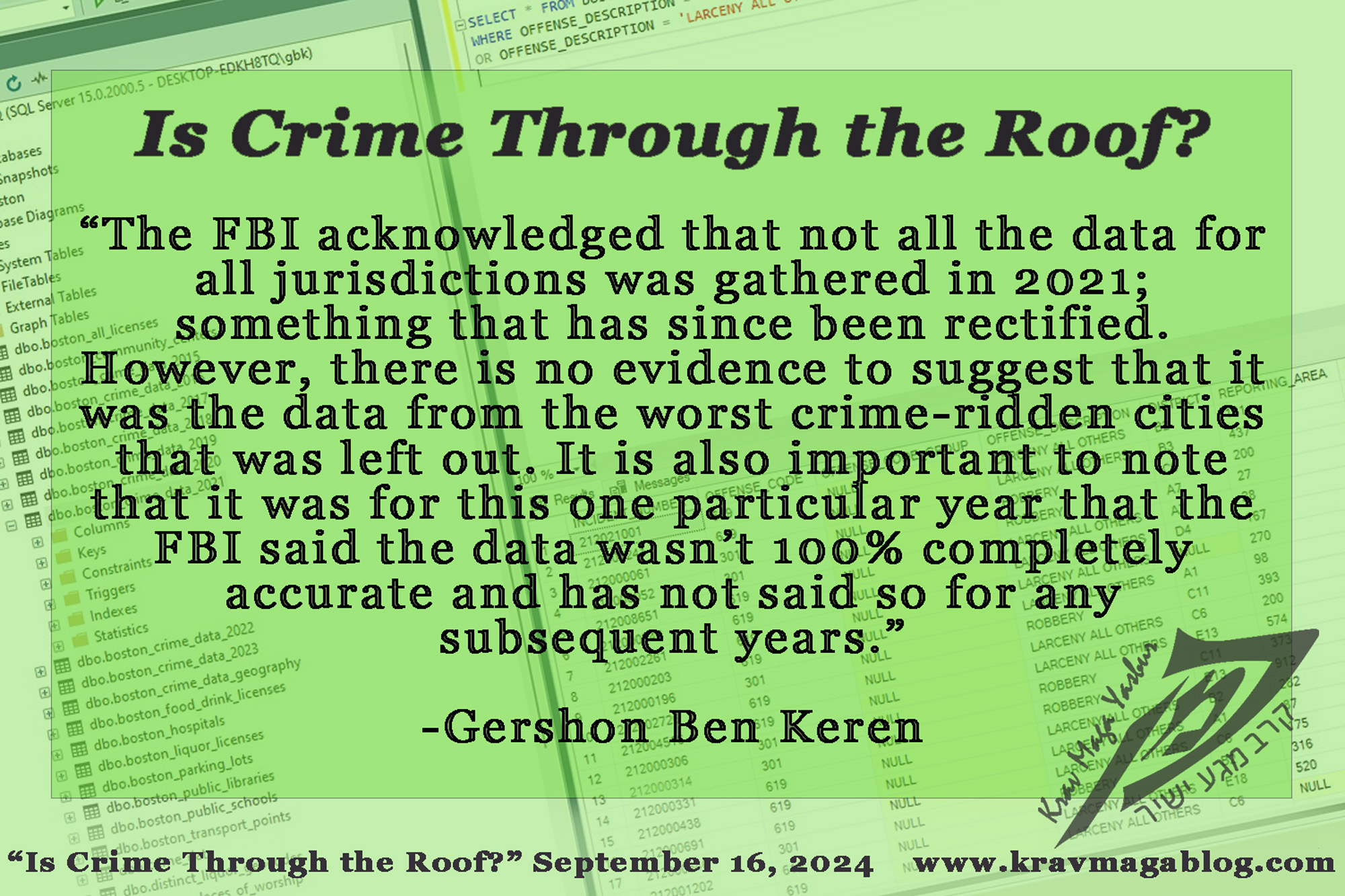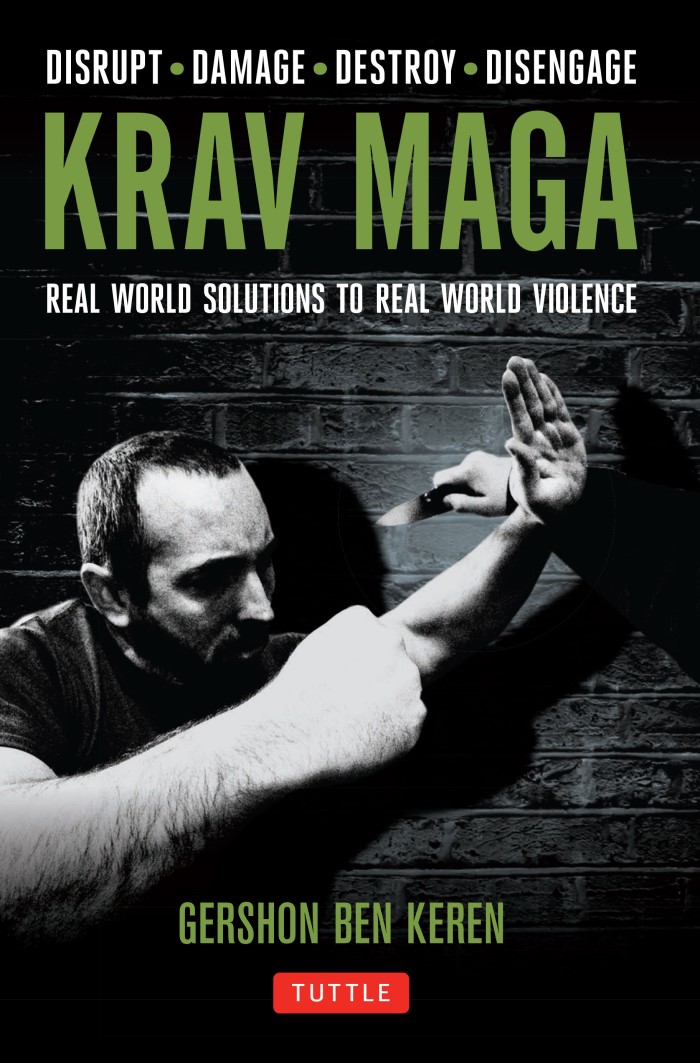Is Crime Through the Roof?, is an article written by Gershon Ben Keren, a 5th Degree Black Belt in Krav Maga, who teaches Krav Maga in Boston, MA. He has also authored three Amazon best-Selling Books on Krav Maga.
It’s a common argument that is often made by the political right, whether in the UK, US or Europe, that crime is always getting worse. In the 1980’s both Reagan in the US, and Thatcher in the UK claimed that their parties were the parties of “law and order”. Whilst the 1980’s in both the US and the UK saw a period of high crime, since the mid-1990’s the crime rate in both countries has been falling steadily, with an occasional “blip” (especially around the COVID & Immediate Post-COVID time), but nothing that would be seen as significant or that would indicate that we are heading for a crime wave etc. So, when Donald Trump in the presidential debate said that crime was at its highest level ever, even accounting for political hyperbole and exaggeration, I was trying to work out where this “idea” was coming/originating from; it obviously couldn’t come from any official statistics, so did it/could it come from a poll that his campaign had taken etc. Few lies or pieces of misinformation don’t have some factual basis, even though it may be extremely tenuous, so I was interested in where this piece of misinformation – that may have been picked up on inadvertently rather than deliberately – came from, and Trump’s claim that the crime statistics are wrong does have an origin story, if not a solid basis. However, it’s also a leap to say because a statistic is “wrong” your unsubstantiated opinion/perspective – that the crime rate is up – should be substituted for it; if a statistic is wrong, it can be wrong in different directions. So why does Donald Trump believe that crime is up (which it may be in certain locales/areas but isn’t the case universally), and why does he believe the FBI crime statistics are “wrong”. I’ll answer the last question first.
In 2021 the FBI changed the way it collected and reported on crime. The U.S. has always had an issue reporting on crime statistics, due to the way different agencies and states measure and report crime. Up until 2012, national statistics were based on aggregate data gathered from individual agencies e.g., if in Baltimore there were 337 homicides recorded for 2020, these would be added to the 882 statewide homicides that occurred in New York etc. All of these aggregates are totaled up and you can then come up with a homicide figure for the U.S., divide it by the US population, and get a figure that says for 2020, the homicide rate in the US was 7.5 homicides per 100 000 etc. You can then see if that was better or worse than the previous year, and make your conclusions about which direction the homicide rate is going in. I’ve chosen homicide as the example because it is a very difficult/impossible statistic to “massage” e.g., a local law-enforcement agency may try to classify a robbery (a violent crime) as a theft (a non-violent crime), in order to make it look like violent offending is down in their district/jurisdiction etc. It is much harder to reclassify a dead body as something other than a dead body. This is why when looking at crime statistics the homicide rate is so important. If homicides are up but all other combined crimes are down, criminologists and statisticians start asking questions as to whether the values and rates for the other crimes are valid. So, when I say crime has been falling steadily since the mid-1990s that is reflected by the homicide rate. This doesn’t mean that it happens universally/across the board e.g., a particular area you live in may be seeing an increase in burglaries and robberies, whilst most other areas may see a reduction – our individual experiences of crime and violence may be specific to us and not reflect a national trend.
However, this aggregated data approach that the UCR (Uniformed Crime Reporting) program used was extremely limited and so in 2021 it was replaced with a much richer and more detailed reporting system which collected individual rather than aggregated data. This system – the National Incident-Based Reporting System (NIBRS) – looks at crime, nationally, at the individual incident/event level. As with any change/transfer between two systems and methods of data gathering and analysis, things didn’t go flawlessly, and there was transparency around this i.e., nobody tried to pretend that every piece of data was gathered and processed correctly from the outset. From an information technology perspective think about the complexities of gathering every incident that occurred in the US, using a completely new method of data acquisition, that was different from the one used for the last fifty years, and then think whether it is likely that in the first year of implementation the process would be 100% successful and accurate. The FBI acknowledged that not all the data for all jurisdictions was gathered in 2021; something that has since been rectified. However, there is no evidence to suggest that it was the data from the worst crime-ridden cities that was left out. It is also important to note that it was for this one particular year that the FBI said the data wasn’t 100% completely accurate and has not said so for any subsequent years.
So having answered the origin story concerning the incorrect reporting of crime and that there is no evidence that it wasn’t reflective of crime in the U.S., even though it might have not included a very small percentage of offenses from various locales, it is worth going back to the first question: Why does Donald Trump want to make it appear that the homicide rate is the highest it’s ever been (remember that homicides are hard to “massage” away)? Because he’s a politician battling against someone who is already in power. Making the argument that the crime rate is high under the present administration makes it appear that they aren’t in control and that someone needs to come in and fix the problem. If the statistics don’t bear this out point to “something” that happened which can be used to explain this: the FBI’s own admission that in 2021 the data captured when transitioning from one system to another might not have been all of it – and argue that the data missed came from the most crime-ridden cities/areas etc. You may not be informed about the real story, or you may not choose to care, but either way if it suits your political ends, and your audience isn’t going to know how to check the facts, it plays to your advantage.
0 COMMENTS